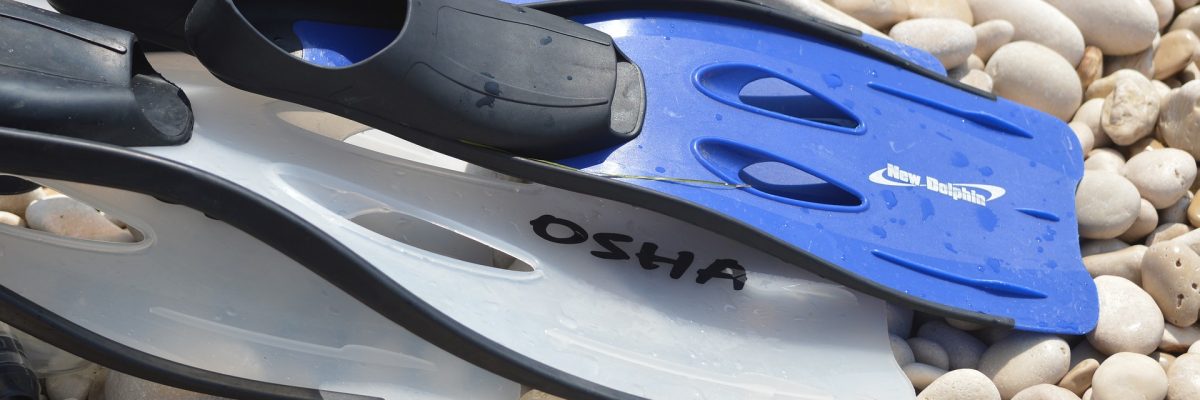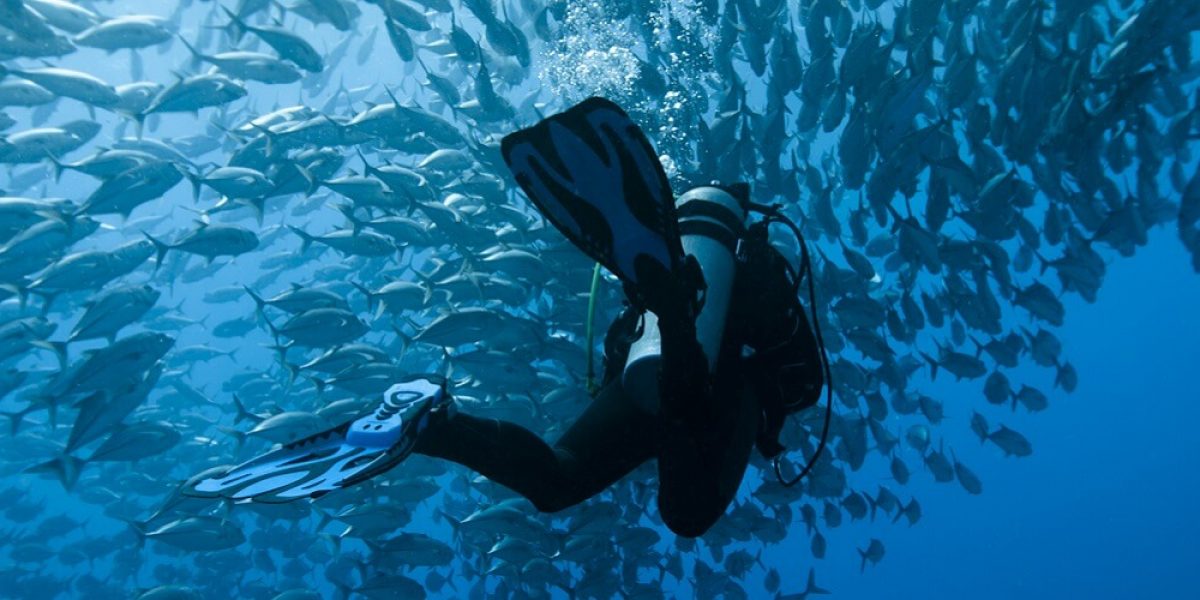So what is a Dry Snorkel? Dry snorkels prevent water from entering the snorkel tube, allowing you to focus on snorkeling rather than expelling water or panicking. Dry snorkeling is ideal for novices and people who want a seamless experience while watching marine life.
A specific type of float mechanism is situated at the top of the tube in the best dry snorkels. If the snorkel becomes immersed underwater, the float valve will close the tube opening at the snorkel’s top. This dry top keeps water out of the snorkel, which is why they’re called ‘dry’ snorkels.
A snorkeler will never have a tube full of water when using a full dry snorkel. The best thing about this style of snorkel is that it allows the user to swim on the surface and if required dive a bit deeper without worrying about continually cleaning water out of the tube. While the dry snorkel is more convenient and efficient to use than the conventional or flexible snorkel, it does have some disadvantages. The valve at the top of the snorkel can occasionally become clogged, making breathing difficult. The dry snorkel may be more buoyant underwater, increasing drag.
Although pretty popular, dry snorkeling is not the only kind out there! There are five common varieties of snorkels, each with its own set of benefits and drawbacks. The main difference being between a dry snorkel vs wet snorkel. Here is some information to help you decide which is best for you and your snorkeling needs.
The traditional snorkel, often known as a J-style snorkel, is just a plastic tube with a mouthpiece attached. This snorkel is normally bent, although it can be customized to fit a specific shape.
The basic snorkel is the most cost-effective snorkel on the market, and it may be used for both snorkeling and scuba diving. However, the stiffness of the tubing can make it difficult to use. Furthermore, if the snorkel is entirely submerged at any point, the user must aggressively exhale to empty the water from the top of the snorkel unlike a full dry snorkel. Nonetheless, it is great for beginners due to its simple structure, ease of packing, and low price.

This snorkel contains a flexible and rigid section, as well as a one-way valve at the bottom to help remove any water that may come into the snorkel.
This, like the traditional snorkel, can be used for both snorkeling and scuba diving. The increased flexibility allows divers to better fit the snorkel around their masks and faces. When not in use, flexible snorkels will naturally fall away from the diver’s face, providing unobstructed views. A purge valve at the bottom of the mouthpiece also helps to promote uninterrupted breathing by flushing extra water out every time the user exhales.
While purge valves make it easier to keep water out of flexible snorkels, keep in mind that the mechanism can fail if sand or debris gets inside and plugs the airway.
The semi-dry snorkel is a hybrid of a traditional snorkel and a full dry snorkel. While the semi-dry snorkel will not keep ALL water out, it will keep splashing water from entering the tube while on the surface.
Many slots and angles at the top of a semi-dry snorkel guide water away from entering the tube of the snorkel. Semi-dry snorkels, unlike dry snorkels, enable water to enter the snorkel when fully immersed.
A full-face mask and a best dry snorkel are combined in this snorkel, with the tube extending upwards from the top of the mask. In addition, rather than inhaling via a mouthpiece, you can relax your jaw and breathe naturally. Simply put on the mask, establish a good seal around your face, and breathe through your mouth. It’s also the greatest option for people who have sore jaws or have difficulty biting down on the mouthpiece.
Some people find it uncomfortable to have their warm air swirling all about their face, which is especially true when diving in warm seas. When you have a beard, you run the risk of leaks, and it also takes up more space in your bag. A full-face snorkel can also be inconvenient to take off and put back on whenever you need to communicate with your snorkel buddy.
So by the end of it, the type of snorkel you use largely depends on what your preferences and comfort levels are. However, one can rarely go wrong with a dry snorkel, especially if you are a beginner.


Crafting unforgettable ocean experiences in Cabo, where luxury, adventure, and breathtaking beauty come together for memories that last a lifetime.
DIVE SHOP LOCATION:
Blvd. Marina #7D Local 37 Int. Plaza Gali. Col. Centro CP 23450 Cabo San Lucas, BCS
TEL. OUTSIDE OF MEXICO:
Tel: 52 624 14 438 71
Cell: 52 1 624 3589875